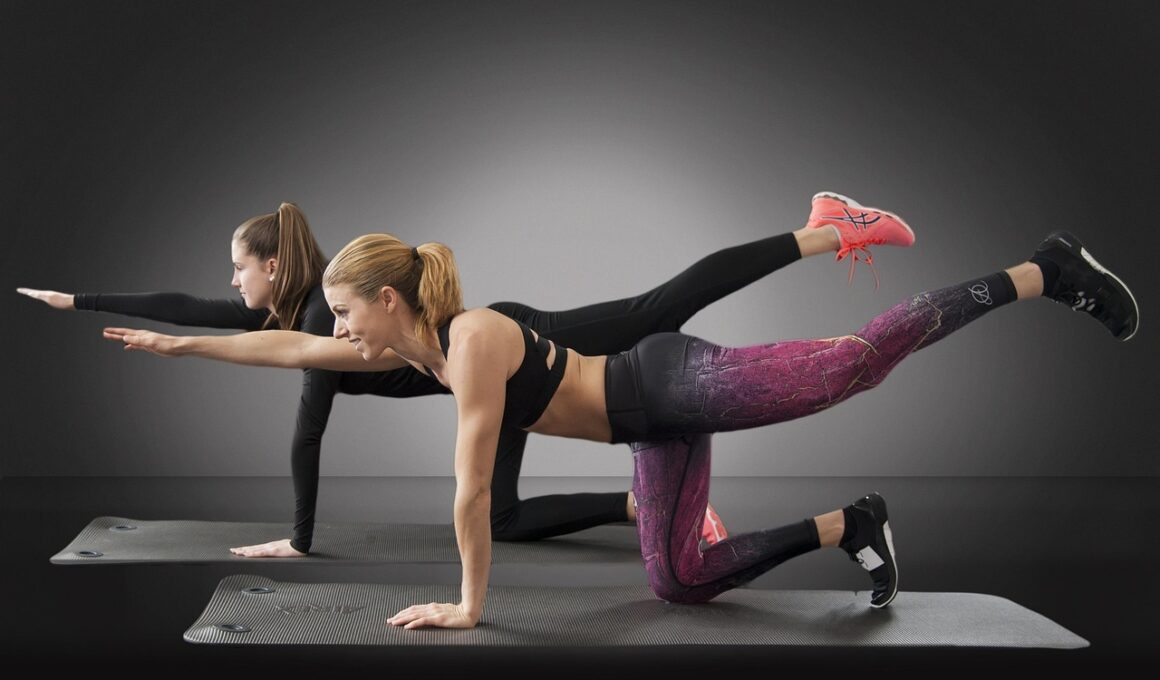HIIT vs Steady-State Cardio: The Kettlebell Edition
High-Intensity Interval Training, or HIIT, has gained immense popularity among fitness enthusiasts. This method comprises short bursts of intense exercise followed by rest or low-intensity periods. A key advantage of HIIT is its efficiency, allowing individuals to achieve significant cardiovascular benefits in a shorter time frame compared to traditional forms of exercise. Kettlebells add versatility to HIIT workouts, enabling better engagement of various muscle groups. When incorporating kettlebells into a high-intensity routine, participants can enhance their strength, power, and overall function. This combination will help to keep workouts fresh and stimulating. Steady-state cardio, on the other hand, involves maintaining a consistent exercise intensity over a period. Many individuals prefer this approach for its simplicity and ability to build endurance. However, the calorie-burning potential often does not match that of HIIT, particularly when kettlebells are involved. Thus, exploring the effectiveness of kettlebell HIIT against steady-state workouts becomes imperative for individuals aiming for diverse training methodologies. Understanding these differences can empower fitness lovers to make informed decisions about their workout strategies.
The Benefits of Kettlebell HIIT Workouts
Kettlebell HIIT workouts stand out for their multifaceted benefits beyond just cardiovascular fitness. Engaging multiple muscle groups simultaneously is a primary feature of kettlebell exercises, leading to improved strength throughout the body. This approach not only challenges the muscles but also assists in burning calories more effectively during the workouts. Another advantage is the enhancement of flexibility and core stability. The dynamic movements required during kettlebell HIIT sessions lead to greater range of motion and improved body mechanics. Moreover, this variation aids participants in avoiding workout monotony, increasing motivation to stick to fitness routines. Additionally, kettlebell HIIT workouts promote greater post-exercise calorie burn, resulting in a condition known as Excess Post-Exercise Oxygen Consumption (EPOC). EPOC refers to the increased calorie expenditure following high-intensity exercise. This occurs as the body works to recover from the anaerobic activity performed. For individuals juggling busy schedules, kettlebell HIIT can maximize workout efficiency, fitting more benefits into shorter durations. This makes it an appealing choice for those looking to achieve optimal results without spending hours at the gym.
Steady-state cardio holds a unique position in the fitness world, providing several benefits that appeal to many individuals. Muscles can adapt more easily to steady-state exercise, leading to improved performance over time. While kettlebell HIIT offers explosive strength and muscle engagement, steady-state cardio builds endurance gradually. This slow and steady approach is particularly favored by individuals focused on longer-duration activities, such as running or cycling. Additionally, engaging in steady-state cardio can be beneficial for mental health, providing a meditative quality during repetitive movements. A steady rhythm can often relax the mind and create a peaceful workout environment. For beginners, this form of cardio requires less technical skill, making it accessible to anyone. Furthermore, steady-state workouts can enhance calorie-burning over extended durations, which can be advantageous for weight loss goals. Depending on individual goals and abilities, finding the right balance between kettlebell HIIT and steady-state cardio is essential. Individuals can tailor their workout routines based on preferences and desired outcomes for their fitness journey.
Comparing Caloric Burn: HIIT vs. Steady-State
When contrasting the caloric burn between kettlebell HIIT and steady-state cardio, HIIT typically demonstrates superior results. A primary reason for this discrepancy lies in the intensity levels associated with both workout types. HIIT workouts, especially when incorporating kettlebells, can lead to significantly higher heart rates over shorter periods, facilitating a greater total calorie expenditure. On average, HIIT can help individuals burn more calories in a 30-minute session compared to prolonged steady-state cardio activities. Furthermore, as previously mentioned, the afterburn effect associated with HIIT workouts can continue burning calories for hours after the session ends. In contrast, steady-state cardio provides a steady calorie burn during the activity, but typically lacks the extended post-exercise benefit provided by HIIT. Understanding the caloric burn component is essential for individuals working on weight loss and fitness goals. When prioritizing caloric burn, incorporating kettlebell HIIT into workout regimens may offer distinct advantages, though some individuals may prefer steady-state cardio for its less demanding and more approachable nature.
It is essential to consider personal preference and fitness levels when selecting between kettlebell HIIT and steady-state cardio. Individuals looking for effective cardiovascular gains might benefit from the explosive and rigorous nature of kettlebell HIIT. However, those new to working out may find steady-state cardio less intimidating. Each exercise form presents unique challenges and can set the stage for various improvements based on fitness aspirations. It’s also important to note that both workouts can coexist within a fitness program, offering individuals the chance to experience comprehensive benefits. For example, alternating between kettlebell HIIT and steady-state cardio throughout the week can provide a balanced regimen targeting cardiovascular fitness, endurance, and strength. This variation keeps workouts engaging while reducing the potential for fitness plateaus. Ultimately, listening to one’s body and setting achievable goals will dictate the most effective strategy. Whether gravitating towards kettlebell HIIT or steady-state, ensuring consistency and enjoyment should remain priorities for anyone aiming to maintain a successful exercise routine.
Creating a Balanced Fitness Routine
Designing a balanced fitness routine that effectively merges kettlebell HIIT and steady-state cardio is imperative for achieving optimal results. To create an effective schedule, one might start by ensuring that adequate rest days are included, allowing the body to recover from intense HIIT workouts. Integrating kettlebell HIIT sessions two to three times a week can facilitate strength building while improving cardiovascular endurance. Meanwhile, steady-state cardio can fill in on non-HIIT days to support ongoing aerobic fitness. Moreover, mixing in other types of workouts, such as strength training and flexibility routines, can further enhance overall physical fitness. Along with a well-rounded schedule, nutritional support plays a critical role in achieving fitness objectives. Fueling the body with a balanced diet rich in nutrients is essential for performance and recovery. Additionally, remembering to stay hydrated during these sessions helps to optimize physical capabilities and enhance recovery time. A well-structured fitness plan that includes a diverse range of exercises, from kettlebell HIIT to steady-state cardio, will help individuals in achieving their goals while keeping the workouts fun and engaging.
Finally, it’s vital to keep track of progress, assessing both physical capabilities and workout enjoyment while navigating kettlebell HIIT and steady-state cardio. Utilizing fitness apps or journals can help in tracking workouts, setting targeted goals, and monitoring improvements over time. Regularly documenting workouts encourages individuals to stay accountable and remain motivated. Additionally, evaluating the effectiveness of each workout type fosters a sense of awareness regarding what resonates best with personal fitness journeys. As individuals assess their own experiences, they can make more informed choices regarding the duration, intensity, and type of exercises included in their routines. Ultimately, knowing what works and finding fitness passion is key to sustained engagement. By remaining focused on personalized goals and adapting workouts as needed, anyone can tailor their exercise programs to meet their unique needs. Embracing variety and celebrating progress, regardless of workout type, creates a fulfilling fitness experience.


